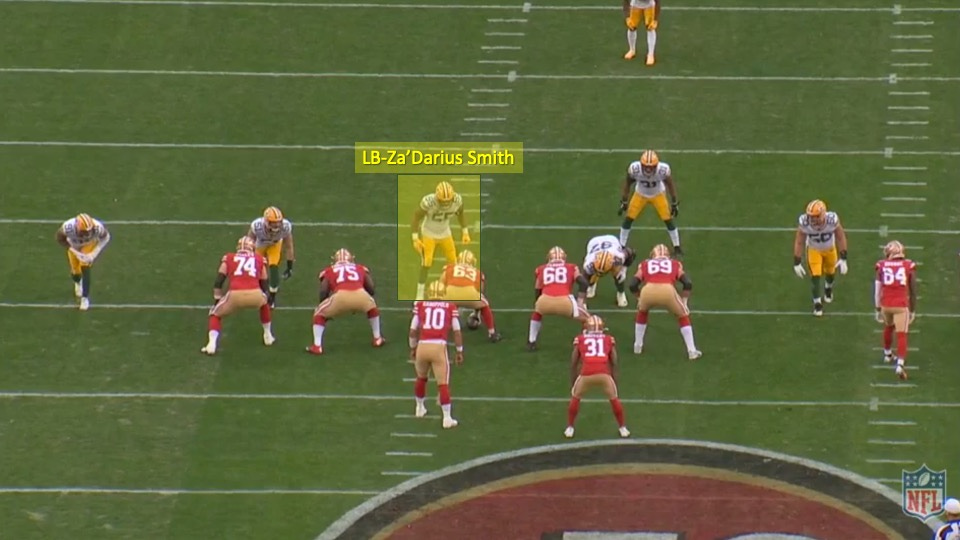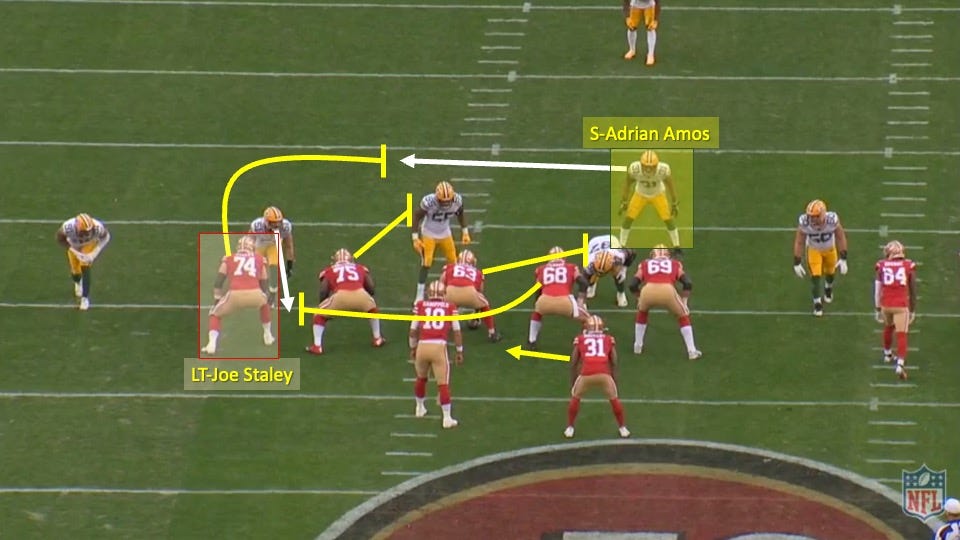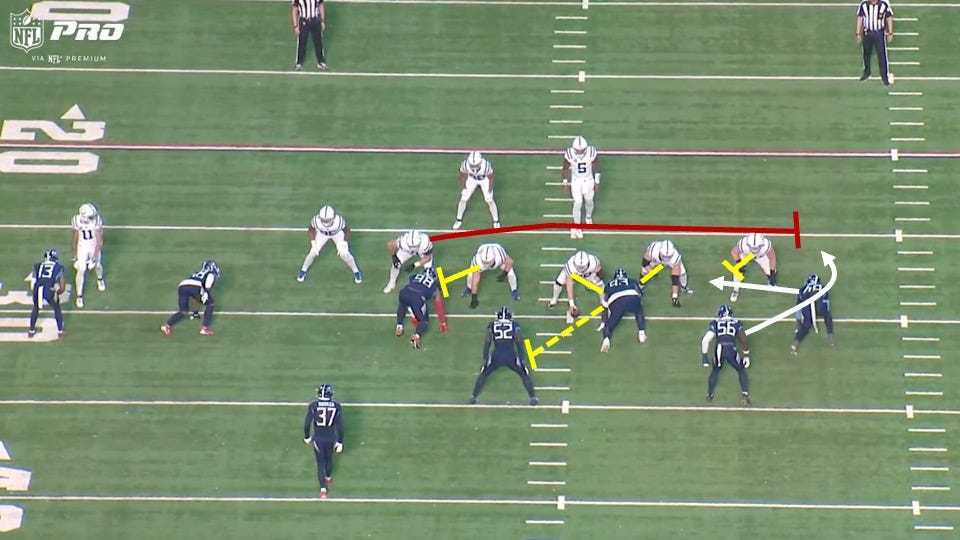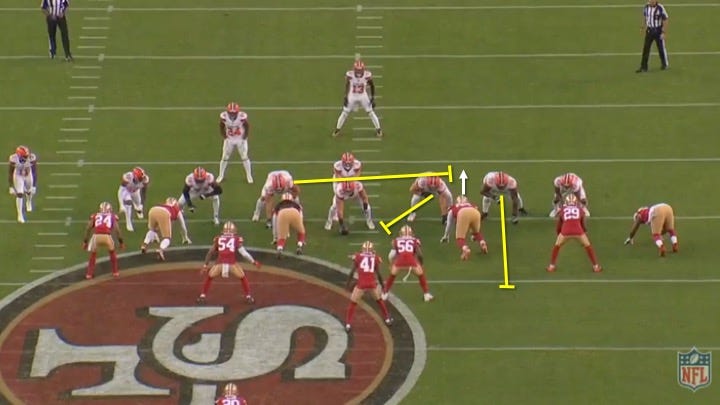Traps, while generally not a staple of any run game, are great change-of-pace plays that can catch the defense with their pants down.
The play design allows certain offensive linemen to bypass the D-lineman in front of them and quickly get to the second level. That D-lineman then gets kicked out by a pulling lineman (and sometimes they’ll take themselves completely out of the play by getting too far upfield).
It’s a great play for taking advantage of aggressive D-linemen, countering interior blitzes, or breaking tendencies in the run game.
The type of trap I’ll talk about in this breakdown is called a “short trap.” The distinction here is that on a short trap, the pulling or trapping offensive lineman will generally block a D-lineman that is 2 gaps away or 2 defenders on the line of scrimmage away (It varies by front). A “long trap” would be 3 D-linemen/gaps (or more) away.
This example comes courtesy of Kyle Shanahan and the 2019 San Francisco 49ers. In their NFC Championship Game blow-out of the Packers that season, they ran for a staggering 285 yards on 42 carries (they had so much success on the ground that they threw just 8 passes).
San Francisco’s first big run came on their initial scoring drive. This was 3rd-and-8, an obvious passing situation. The Packers were playing man coverage in response and threatening with pressure from linebacker Za'Darius Smith in the A-Gap:
The 49ers didn't call a pass here, though. Instead, they called a trap.
As mentioned above, this can be a good play for handling inside pressure looks. That’s because it allows the play-side offensive linemen to block down and pin that inside pressure in the middle.
The play design is illustrated below. Notice the center (#63) block down on the back-side D-tackle, the left guard (#75) block down on Za’Darius Smith inside, and left tackle Joe Staley get up to the second level and pin safety Adrian Amos in the middle:
Kyler Fackrell would be the defender getting trapped on this play. Right guard Mike Person (#68) would pull and kick him out:
Fackrell was itching to rush the quarterback since this was an “obvious” passing situation. He ended up falling down after bracing for contact from Staley that never came. Then he was kicked out by Person:
With the Packers playing man coverage, many of their DB’s were too late reacting to Mostert bursting through the line of scrimmage. The result was a 36-yard touchdown run that sent the 49ers on their way to a rout:
Great call and great execution.
Check out some other variations of the Trap run by clicking on the links below:
The Long Trap
There are many different types of Trap plays. The “Long Trap” is a variation where the puller comes from a longer distance than a traditional trap play (generally 3 D-linemen/gaps or more away).
Fake-Toss Trap
Deception is inherent to trap runs in general. A defensive lineman assumes he’s going to get blocked by the offensive lineman in front of him, only to be bypassed for another defender.
QB Tackle-Long-Trap Bash
Misdirection is an effective tool for any offensive coordinator to incorporate into his system. The more you can keep a defense guessing and unsure of what they’re seeing, the slower they’ll play. That’s particularly important in today’s NFL, where the players are faster than ever.








